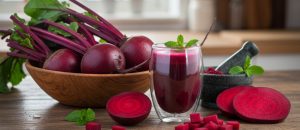No authentic Adana Kebabı meal is complete without its vibrant and essential side dishes. These fresh, tangy, and often spicy accompaniments are crucial for balancing the rich flavors of the kebab, cleansing the palate, and adding textural excitement to every bite. For the ambitious home chef who has mastered the art of making Adana Kebabı, preparing these traditional mezes and salads is the next step to creating a truly unforgettable Turkish feast. This comprehensive, step-by-step guide will walk you through crafting the best homemade Spicy Ezme, Sumac Onion Piyaz, and the optional but highly recommended Gavurdağı Salad. Get ready to elevate your Adana Kebabı experience with these authentic recipes, designed to bring the full spectrum of Turkish gastronomy right to your dining table.
Elevating Your Kebab: The Essential Role of Side Dishes
Serving Adana Kebabı with the right side dishes is not just a tradition; it’s a culinary necessity that enhances the entire eating experience. These accompaniments are designed to complement the kebab, providing a refreshing balance and adding layers of flavor and texture that elevate the meal from delicious to extraordinary. For any home chef aiming for an authentic Turkish spread, understanding the role of these sides is paramount.
Why Accompaniments are Crucial for Adana Kebabı
Accompaniments are crucial for Adana Kebabı as they provide a necessary contrast and balance to the rich, often spicy, and fatty nature of the main dish.
- Palate Cleanser: The fresh, acidic, and sometimes spicy elements in sides like ezme and piyaz cut through the richness of the lamb fat, refreshing your palate between bites of kebab. This allows you to appreciate the complex flavors of the kebab more fully.
- Digestive Aid: Many traditional Turkish accompaniments, such as salads with sumac, lemon, and fresh vegetables, are rich in fiber and acidity. These ingredients can aid digestion, making the meal feel lighter and more comfortable despite the substantial main course.
- Textural Variety: Adana Kebabı offers a succulent, slightly firm texture. Sides like crispy onions, finely chopped tomatoes, and crunchy walnuts (in Gavurdağı) provide a delightful textural contrast that makes the meal more engaging and enjoyable.
- Flavor Harmony: While Adana Kebabı is simple in its spicing, the side dishes introduce a broader spectrum of flavors—tangy, fresh, mildly bitter, and often more intensely spicy—that harmonize with and uplift the kebab’s core taste.
The Philosophy of Contrast: Freshness vs. Richness
The core philosophy behind pairing these specific accompaniments with Adana Kebabı is creating a harmonious contrast between freshness and richness.
- Richness of Kebab: Adana Kebabı, with its high-fat lamb and charcoal grilling, is inherently rich and savory, often with a pleasant spicy kick.
- Freshness of Sides: The side dishes, in turn, are typically fresh, vibrant, and acidic.
- Acidity: Ingredients like lemon juice, sumac, and pomegranate molasses provide a sharp, tangy acidity that cuts through the fat of the kebab.
- Herbs: Abundant fresh parsley, mint, and rocket offer herbaceous notes and a clean, refreshing taste.
- Vegetables: Crisp tomatoes, cucumbers, and onions contribute hydrating freshness and a light crunch.
- Perfect Balance: This interplay ensures that no single flavor or texture overwhelms the other. The freshness of the salads invigorates the palate, making each bite of the rich kebab feel as exciting as the first, while the kebab provides a satisfying depth of flavor that complements the lighter sides. It’s a culinary dance where each partner highlights the best qualities of the other.
Recipe 1: Authentic Adana Ezme (Spicy Tomato Salad)
Adana Ezme is a fiery, fresh, and finely chopped tomato and pepper salad that is a non-negotiable accompaniment to Adana Kebabı, known for its vibrant flavor and palate-cleansing properties. It offers a delightful spicy kick and a tangy freshness that perfectly complements the rich lamb.
Ingredients for Homemade Adana Ezme
To prepare an authentic Adana Ezme, you’ll need fresh, high-quality vegetables and a few key seasonings.
- 3-4 ripe, firm tomatoes: Preferably local, juicy varieties.
- 2-3 green bell peppers: Or long, mild green peppers.
- 1-2 hot green peppers: Or a smaller amount of Turkish sivri biber for heat (adjust to taste).
- 1/2 a small red onion: Finely chopped.
- 1 bunch of fresh parsley: Finely chopped.
- 2-3 cloves of garlic: Minced very finely (optional, some Adana versions omit).
- 2 tablespoons tomato paste (domates salçası): For depth of flavor and color.
- 1 tablespoon red pepper paste (biber salçası): Preferably hot, for heat and authentic taste.
- 3-4 tablespoons pomegranate molasses (nar ekşisi): For tangy sweetness and acidity.
- 3-4 tablespoons olive oil: Good quality extra virgin olive oil.
- 1 teaspoon ground sumac: For additional tang.
- Salt to taste: Start with 1 teaspoon and adjust.
- Black pepper to taste: Optional.
- Pinch of dried mint: Optional, for added aroma.
Step-by-Step Preparation of Spicy Ezme
The secret to a great ezme lies in the very fine chopping of all ingredients, ensuring a cohesive texture where flavors meld beautifully.
- Prepare Vegetables: Wash and thoroughly dry all vegetables.
- Tomatoes: Deseed the tomatoes (optional, for less liquid) and chop them into very small, uniform pieces.
- Peppers: Deseed the green and hot peppers, then chop them as finely as the tomatoes.
- Onion & Garlic: Peel and chop the red onion and garlic (if using) very finely.
- Parsley: Wash, dry, and finely chop the fresh parsley.
- Combine Ingredients: Place all the finely chopped vegetables and herbs into a large mixing bowl.
- Add Pastes & Seasonings: Add the tomato paste, red pepper paste, pomegranate molasses, olive oil, sumac, salt, black pepper (if using), and dried mint (if using) to the bowl.
- Mix Thoroughly: Using a spoon or your hands (wearing gloves for hot peppers), mix all the ingredients very thoroughly until everything is well combined and the flavors are evenly distributed.
- Rest and Serve: Cover the bowl with plastic wrap and let the ezme rest in the refrigerator for at least 30 minutes to allow the flavors to meld.
- Serve: Serve chilled, garnished with a sprig of fresh parsley, alongside your Adana Kebabı and warm lavaş bread.
Pro Tips for the Best Ezme
Achieving that authentic, restaurant-quality ezme requires a few extra touches and attention to detail.
- Finely Chop, Don’t Blend: While a food processor can save time, it often over-processes the vegetables, turning them into a watery puree. Hand-chopping ensures the right texture, retaining a slight bite and preventing excessive liquid release. If using a food processor, pulse very briefly and carefully.
- Quality of Ingredients: The taste of ezme heavily relies on the freshness and quality of its vegetables, especially the tomatoes and peppers. Use ripe, flavorful ones.
- Balance of Acidity and Heat: Adjust the amount of hot pepper and pomegranate molasses to your preference. The ezme should be spicy, but also tangy and refreshing.
- Don’t Skimp on Olive Oil: Good quality olive oil not only adds flavor but also helps bind the ingredients and contributes to a silky texture.
- Taste and Adjust: Always taste your ezme before serving and adjust salt, heat, or pomegranate molasses as needed. Flavors will deepen as it rests.
- Freshness is Key: Ezme is best enjoyed fresh. While it can be stored for a day, the vegetables will lose some of their crispness over time.
Recipe 2: Refreshing Sumac Onion Piyaz
Sumac Onion Piyaz is a classic, simple, yet incredibly effective side dish for Adana Kebabı, offering a pungent, tangy, and fresh contrast that perfectly complements the rich lamb. Its vibrant color and refreshing flavor make it an indispensable part of an authentic Turkish kebab feast.
Ingredients for Sumac Onion Piyaz
This piyaz requires only a few, high-quality ingredients to achieve its distinctive taste.
- 2 large red onions: Essential for their color, mild sweetness, and slight sharpness.
- 1 large bunch of fresh parsley: Finely chopped, for freshness and color.
- 2-3 tablespoons ground sumac: The key ingredient for its characteristic tartness and aroma. Do not skimp on this!
- 1-2 tablespoons olive oil: Good quality extra virgin olive oil for richness and sheen.
- Juice of 1/2 to 1 lemon: For an extra layer of acidity and freshness (adjust to taste).
- Salt to taste: Start with 1/2 teaspoon and adjust.
- A pinch of red pepper flakes (optional): For a subtle spicy kick.
Step-by-Step Preparation of Sumac Onion Piyaz
The preparation of Sumac Onion Piyaz is straightforward, but the key is in the proper slicing and gentle massaging of the onions.
- Slice Onions: Peel the red onions and slice them very thinly into half-moons (piyazlık doğrama). Uniformity in slicing is important for texture.
- Rinse (Optional but Recommended): Place the sliced onions in a colander and rinse them briefly under cold water. This helps to reduce their raw pungency. Drain thoroughly and pat dry with paper towels.
- Add Sumac and Salt: Transfer the sliced onions to a mixing bowl. Add the sumac and salt.
- Massage Gently: Using your hands, gently massage the onions with the sumac and salt for 1-2 minutes. This softens the onions, helps them absorb the sumac’s flavor, and further reduces their sharpness without making them mushy.
- Add Remaining Ingredients: Add the finely chopped parsley, olive oil, lemon juice, and optional red pepper flakes to the bowl.
- Mix and Serve: Gently toss all the ingredients together until well combined.
- Serve: Serve immediately with your Adana Kebabı. This piyaz is best enjoyed fresh.
Variations and Serving Suggestions
While the classic Sumac Onion Piyaz is perfect as is, slight variations can be explored, and it’s versatile in serving.
- Add Fresh Mint: A few finely chopped fresh mint leaves can add an extra layer of coolness and aroma.
- Cherry Tomatoes: Halved cherry tomatoes can be added for a pop of color and sweetness, though this deviates slightly from the traditional, very simple version.
- Pomegranate Seeds: For a festive touch and burst of flavor, sprinkle a few fresh pomegranate seeds just before serving.
- Serving with Kebab: This piyaz is typically served as a refreshing side. Many locals will scoop some of the piyaz into their lavaş bread before wrapping it around the kebab, creating a flavorful and juicy bite. It’s also excellent as a standalone salad.
Recipe 3: Tangy Gavurdağı Salad (Optional but Recommended)
Gavurdağı Salad is a finely chopped, vibrant, and tangy salad that offers a delightful texture and flavor contrast, making it an excellent optional accompaniment to Adana Kebabı. Its rich blend of vegetables, walnuts, and pomegranate molasses provides a sophisticated freshness.
Ingredients for Classic Gavurdağı Salad
Gavurdağı Salad requires fresh, crisp vegetables and a specific dressing to achieve its renowned tangy and crunchy profile.
- 3-4 ripe, firm tomatoes: Deseeded and very finely diced.
- 2 cucumbers: Peeled (optional) and very finely diced.
- 2 green bell peppers: Deseeded and very finely diced.
- 1 small red onion: Very finely diced.
- 1 large bunch of fresh parsley: Very finely chopped.
- 1/2 cup walnuts: Roughly chopped (this is the “walnut difference”).
- 4-5 tablespoons pomegranate molasses (nar ekşisi): Adjust to your preferred tanginess.
- 3-4 tablespoons extra virgin olive oil: Good quality.
- Juice of 1/2 lemon (optional): For extra brightness.
- Salt to taste: Start with 1 teaspoon and adjust.
- Red pepper flakes (optional): For a touch of heat.
- Dried mint (optional): For added aroma.
Step-by-Step Preparation of Gavurdağı
The key to an authentic Gavurdağı Salad is ensuring all ingredients are finely and uniformly chopped, creating a harmonious blend of flavors and textures.
- Prepare Vegetables: Wash and thoroughly dry all vegetables.
- Tomatoes, Cucumbers, Peppers, Onion: Finely dice all these vegetables. The pieces should be small and uniform, resembling a coarse salsa.
- Parsley: Finely chop the fresh parsley.
- Chop Walnuts: Roughly chop the walnuts. Do not make them too fine; you want distinct pieces for crunch.
- Combine: Place all the finely diced vegetables, chopped parsley, and chopped walnuts in a large mixing bowl.
- Prepare Dressing: In a separate small bowl, whisk together the pomegranate molasses, olive oil, lemon juice (if using), salt, red pepper flakes (if using), and dried mint (if using).
- Dress the Salad: Pour the dressing over the chopped vegetables and walnuts.
- Toss Gently: Gently toss the salad until all ingredients are well coated with the dressing.
- Rest and Serve: Cover the bowl with plastic wrap and let the salad rest in the refrigerator for at least 15-30 minutes to allow the flavors to meld.
- Serve: Serve chilled as a refreshing and tangy accompaniment to your Adana Kebabı.
The Walnut Difference
The addition of walnuts is a distinguishing feature of Gavurdağı Salad, setting it apart from other Turkish chopped salads.
- Texture: Walnuts provide a crucial textural contrast, adding a delightful crunch that plays against the softness of the finely diced vegetables. This creates a more dynamic and engaging mouthfeel.
- Flavor: Walnuts introduce a subtle earthy and nutty flavor that complements the tanginess of the pomegranate molasses and the freshness of the vegetables, adding depth to the salad’s overall profile.
- Richness: A slight richness from the walnuts also helps bridge the gap between the lighter salad and the richer kebab, creating a more integrated meal experience. Ensure the walnuts are roughly chopped, not finely ground, to maintain their textural contribution.
Pairing and Presentation: Completing Your Adana Kebabı Feast
Beyond the individual dishes, the way you pair and present your homemade Adana Kebabı feast significantly enhances the authentic Turkish dining experience. The interplay of flavors, textures, and even the visual appeal contributes to a memorable meal. This section guides you on how to best serve your culinary creations and suggests traditional beverages that perfectly complement Adana Kebabı.
How to Serve Your Homemade Accompaniments
Serving your homemade accompaniments thoughtfully will elevate the entire kebab meal, mimicking a traditional Adana table.
- Warm Lavaş or Pide: Always serve Adana Kebabı with freshly warmed lavaş bread or pide. The warmth makes the bread pliable and ready to absorb the juices and flavors of the kebab and its sides.
- Serving Suggestion: Traditionally, kebab is often eaten by tearing off pieces of lavaş, scooping up some kebab, ezme, and piyaz, and enjoying it as a wrap (dürüm).
- Individual Bowls/Plates: Serve each accompaniment (Ezme, Piyaz, Gavurdağı) in separate, appealing bowls or small plates. This allows guests to choose their preferred sides and helps maintain the distinct flavors of each dish.
- Fresh Herbs & Lemon Wedges: A platter of fresh herbs like parsley, mint, and rocket, along with plenty of lemon wedges, should always be on the table. Lemon juice is a traditional dressing for the greens and can be squeezed over the kebab as well.
- Simple Presentation: While appealing, avoid overly complex garnishes. The beauty of these dishes lies in their vibrant, natural colors and fresh ingredients. A simple sprig of parsley on the ezme or a sprinkle of extra sumac on the piyaz is often sufficient.
Suggested Beverages: Şalgam Suyu and Ayran
The choice of beverage is crucial for a truly authentic Adana Kebabı experience, as traditional Turkish drinks are specifically chosen to complement the meal.
- Şalgam Suyu: This fermented turnip juice is the quintessential Adana Kebabı drink.
- Recommendation: Serve chilled şalgam suyu, ideally the “acı” (spicy) version, if you enjoy a kick. Its unique tartness and slight spice cut through the richness of the kebab and act as an excellent palate cleanser. (For more on this iconic drink, refer to our Adana Kebabı: The Ultimate Guide Pillar Page).
- Ayran: A refreshing drink made from yogurt, water, and salt, served cold and often frothy.
- Recommendation: Ayran offers a creamy, tangy, and cooling contrast to the kebab’s heat, making it a very popular and soothing choice.
- Avoid: Sugary sodas, overly sweet fruit juices, or heavy alcoholic beverages (other than traditional rakı, which is a different pairing context) are generally not recommended as they can overpower the delicate balance of flavors.
The Unsung Heroes of Your Kebab Table
The journey to crafting authentic homemade Adana Kebabı is truly complete when it is accompanied by its traditional and vibrant side dishes. This guide has provided you with the detailed recipes for Spicy Ezme, Sumac Onion Piyaz, and Gavurdağı Salad, the unsung heroes that transform a simple grilled meat into a full-fledged Turkish feast. These fresh, tangy, and often spicy accompaniments are not mere additions; they are crucial for providing balance, cleansing the palate, and adding a delightful array of textures and flavors. By mastering these recipes, you’re not just cooking; you’re embracing a culinary tradition that emphasizes harmony and contrast. So, with your perfectly grilled Adana Kebabı and these exquisite homemade sides, prepare to gather your loved ones and enjoy a truly authentic and unforgettable Turkish gastronomic experience right at home. Afiyet olsun!


























